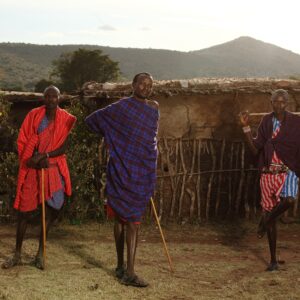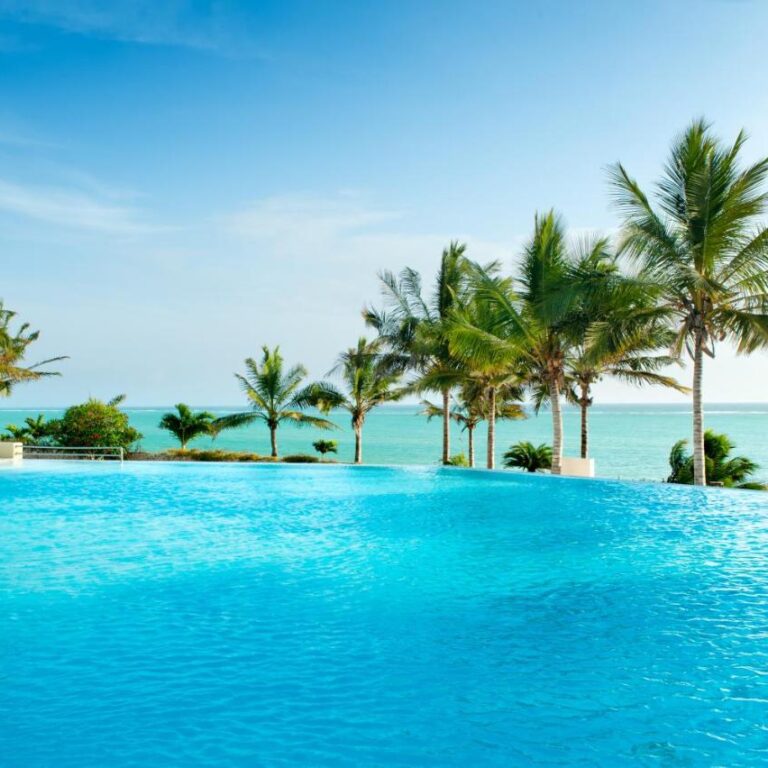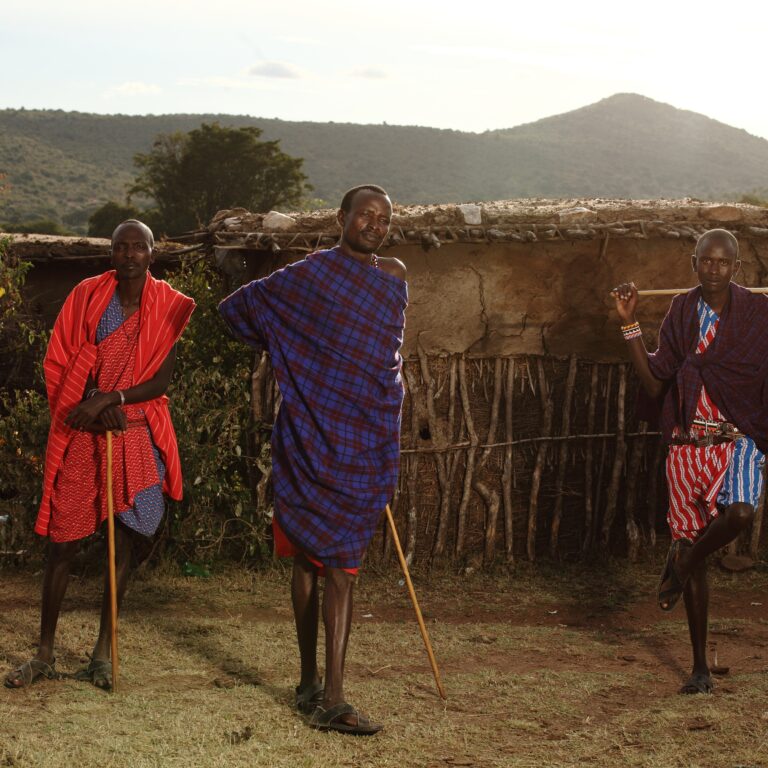Mount Kilimanjaro – Where Does It Rank In The Seven Summits.
For aspiring mountaineers and adventurers alike, the Seven Summits represent the ultimate challenge—a quest to scale the highest peak on each of the world’s seven continents. This elite list includes some of the most formidable mountains on Earth, from the icy fortress of Everest to the remote wilderness of Vinson Massif. Mount Kilimanjaro ranks fourth highest among the Seven Summits by elevation, following Mount Everest, Aconcagua, and Denali. It is the highest peak on the African continent and is known for being a non-technical climb, making it a popular choice for adventurers.
Yet, standing prominently among them is a peak that has earned a unique reputation: Mount Kilimanjaro, Africa’s highest point and a surprisingly accessible giant. While it may not be the tallest, Kilimanjaro holds a special place in the hearts of climbers, often serving as the perfect gateway to high-altitude mountaineering. So, where does this majestic volcano truly rank, and what makes it such a popular first choice for those dreaming of the world’s highest peaks?
A Towering Fourth on the Global Stage
When it comes to pure elevation, Kilimanjaro’s position is clear. Based on the widely accepted list of the Seven Summits, Mount Kilimanjaro ranks as the fourth-highest peak. With a summit elevation of 5,895 meters (19,341 feet), it stands below the three colossal peaks of Mount Everest (Asia), Aconcagua (South America), and Denali (North America). However, it is taller than Europe’s Mount Elbrus, Antarctica’s Vinson Massif, and the highest peak in Oceania, depending on the list used (either Puncak Jaya or Mount Kosciuszko). This ranking is a testament to Kilimanjaro’s impressive stature, but its true significance is not merely in its height. The mountain’s appeal lies in its unique combination of challenge and accessibility, making it an ideal “first summit” for those looking to test their limits.
Why Kilimanjaro is the Climber’s First Choice
Kilimanjaro is often referred to as “The People’s Mountain” because it allows nearly anyone in good physical condition to experience the immense satisfaction of reaching a high-altitude summit. This stands in stark contrast to its more technically demanding counterparts. The reasons for its popularity as a first choice are multifold:
Accessible
Unlike the other Seven Summits, climbing Kilimanjaro doesn’t require technical mountaineering skills or specialized equipment like ropes, harnesses, or crampons (in most seasons). The routes are essentially long, strenuous hikes. This makes it accessible to a wide range of people, from seasoned hikers to adventure-seeking tourists. Furthermore, its location in Tanzania, a politically stable country with well-developed tourism infrastructure, makes travel to the mountain relatively straightforward. Climbers can fly into Kilimanjaro International Airport (JRO) and be at the base of the mountain within a few hours. The cost is also a significant factor; a Kilimanjaro climb is generally more affordable than expeditions to peaks like Everest or Denali.
High Altitude, Serious Challenge
Kilimanjaro’s appeal lies not in its technical difficulty but in its high altitude. At 5,895 meters, it’s high enough to present a serious physiological challenge. Climbers experience the effects of low oxygen, including headaches, nausea, and shortness of breath—symptoms of acute mountain sickness (AMS). Successfully summiting Kilimanjaro requires careful acclimatization, patience, and a strong mental fortitude to push through the discomfort. It serves as a perfect training ground for climbers who have aspirations of tackling higher, more technical peaks in the future, as it teaches them how their bodies react to high-altitude environments.
Physically Demanding
Do not mistake “accessible” for “easy.” The climb is physically demanding. Trekkers spend between five and nine days on the mountain, hiking for several hours each day. The final summit push is a grueling overnight trek, often lasting over eight hours in freezing temperatures, darkness, and a steep, sandy incline. Success requires mental resilience and significant physical stamina. It is a true test of one’s limits, proving that one does not need to be a professional mountaineer to achieve something extraordinary.
Tips: Don’t let the lack of technical climbing fool you; Kilimanjaro is physically demanding. The routes are long and steep, with daily hikes lasting anywhere from 4 to 8 hours. The final summit push is particularly grueling, often starting at midnight and involving a 6 to 8-hour ascent in the dark, cold, and thin air, followed by a long descent. The sheer endurance required to climb for several days straight, with minimal sleep and constant physical exertion, tests a climber’s limits. It’s a test of fitness and mental grit, rewarding those who have prepared adequately with the incredible view from the roof of Africa.
Ecological Diversity
One of the most remarkable aspects of climbing Kilimanjaro is the journey through its distinct ecological zones. The mountain is a microcosm of the planet’s diverse biomes, a literal walk from the equator to the Arctic. The trek begins in the cultivated lower slopes and lush rainforest, teeming with colobus monkeys and exotic birds. As you ascend, the forest gives way to the heath and moorland zone, characterized by giant heathers and lobelia plants that seem to belong to a prehistoric landscape. Higher still, the landscape transforms into an alpine desert, a stark, barren world of volcanic rock and dust with minimal plant life. Finally, the summit cone is a desolate, frozen arctic zone, with glaciers and permanent ice fields that glisten in the sun. This rapid transition through different environments makes the climb a captivating and ever-changing experience.
Geographical Significance
Kilimanjaro is not just the highest peak in Africa; it is also the world’s tallest free-standing mountain, meaning it is not part of a larger mountain range. This isolated, solitary position gives it a truly magnificent appearance, rising majestically from the plains of Tanzania. Its iconic, snow-capped summit against the backdrop of the African savanna is a powerful image of global significance. The mountain has three volcanic cones: Kibo (the highest), Mawenzi, and Shira. Although Kibo is dormant, the fact that it is a volcano adds to its mystique. Its isolation makes for breathtaking views from the top, where the curvature of the earth is sometimes visible on a clear day, and you feel as if you’re truly standing on top of the world.
The Allure of Kilimanjaro
Ultimately, the allure of Kilimanjaro is its promise. It is the perfect blend of an attainable goal with a life-changing challenge. It offers the chance for ordinary people to feel like true adventurers, to stand on the roof of a continent, and to see the curvature of the Earth from its summit. For many, it’s not just a mountain to be climbed; it’s a dream to be fulfilled and a pivotal step toward a life of global exploration.
Hiking tips: Kilimanjaro differs from other Seven Summits mainly because it is the world’s highest freestanding mountain, formed by volcanic activity rather than a mountain range, and the summit can be reached by a non-technical trek, not requiring mountaineering skills or equipment. It also offers a unique journey through multiple, distinct climate zones in a single climb.
The Seven Summits are the highest peaks on each of the world’s seven continents. Here is a list showing their rankings by height and their location
The provided list of the Seven Summits, the highest peaks on each continent, is mostly correct, but it presents a common debate for the continent of Oceania. The list should therefore be: Mount Everest (Asia), Aconcagua (South America), Denali (North America), Kilimanjaro (Africa), Mount Elbrus (Europe), Vinson Massif (Antarctica), and either Puncak Jaya or Mount Kosciuszko for Oceania. The choice depends on whether the climber uses the geographic definition of Australia for Oceania, or the more widely accepted mountaineering definition, which uses the more challenging Carstensz Pyramid (Puncak Jaya). The Seven Summits (listed in order of height)
Mount Everest: (Asia): 8,848.86 meters (29,031.7 feet)
Aconcagua: (South America): 6,961 meters (22,837 feet)
Denali: (North America): 6,190 meters (20,310 feet)
Mount Kilimanjaro: (Africa): 5,895 meters (19,341 feet)
Mount Elbrus: (Europe): 5,642 meters (18,510 feet)
Vinson Massif: (Antarctica): 4,892 meters (16,050 feet)
Puncak Jaya (Carstensz Pyramid): or Mount
Kosciuszko (Oceania): 4,884 meters (16,024 feet) or 2,228 meters (7,310 feet)
Puncak Jaya vs. Mount Kosciuszko
The distinction between Puncak Jaya and Mount Kosciuszko for the seventh summit is a matter of geological and geographical interpretation. Some lists use Puncak Jaya because it’s the highest peak in Oceania, which is a geographical region that includes the continent of Australia, New Guinea, and other islands. Others use Mount Kosciuszko because it is the highest peak on the Australian mainland, which is often considered its own continent. This is known as the Messner list and the Bass list, respectively, after the mountaineers who first proposed the two versions of the Seven Summits.
Kilimanjaro vs. Other Seven Summits
Kilimanjaro differs from the other Seven Summits primarily in its non-technical nature, making it a popular and accessible challenge for many, but it is still considered difficult due to its high altitude and demanding physical stamina requirements. While the Seven Summits are the highest peaks on each continent, Kilimanjaro is notably a free-standing volcano, unlike the more complex, technically demanding, and often weather-beaten ranges of mountains like Denali or Everest.
what order should you climb the 7 summits?
There’s no official order to climb the 7 Summits, but a common progression is to start with easier peaks like Kilimanjaro and Elbrus, then move to Aconcagua, before tackling more challenging peaks like Denali, Vinson Massif, and the Carstensz Pyramid, saving the most difficult, Mount Everest, for last. This approach builds technical skills and experience, with Everest generally requiring the most preparation and skills.
Can I Climb Kilimanjaro Independently, or Do I Need a Guide?
Unfortunately (or fortunately, depending on how you look at it), it is not possible to climb Kilimanjaro without a guide. It’s actually prohibited by law – and has been since the 1990s by the Kilimanjaro National Park Authority. Because of this legal prevention, every trip needs to be arranged via a tour operator. You can climb Kilimanjaro solo. However, you will always need a guide as per the rules outlined by the Kilimanjaro National Park authorities. Most companies and tour operators also require that you have a few porters to carry your things.
Do I Need Prior Climbing Experience to Summit Kilimanjaro?
No prior climbing or mountaineering experience is required to summit Kilimanjaro; it is a trekking peak accessible to fit individuals. While the climb is challenging and requires good physical fitness and endurance for consecutive days of hiking, the routes are non-technical and do not involve ropes or climbing gear, relying instead on a strong mental attitude and sufficient preparation to make it to the summit.
Is Climbing Kilimanjaro Dangerous?
Yes, climbing Mount Kilimanjaro is dangerous, though relatively safe for a mountain of its size, with deaths occurring annually due to severe altitude sickness, hypothermia, dehydration, and other medical issues. However, these risks can be significantly reduced by choosing a longer route for better acclimatization, having proper medical preparation and equipment, and selecting an experienced and reputable guide and tour operator.
Is Kilimanjaro the Easiest of the Seven Summits?
Yes, Kilimanjaro is widely considered the easiest of the Seven Summits because it’s a non-technical “walk-up” mountain that doesn’t require ropes, ice axes, or specialized climbing gear. While still a challenging undertaking due to the altitude and trek, it offers a great starting point for those new to high-altitude trekking or aspiring to climb all Seven Summits, as it primarily tests physical fitness and acclimatization.
How Does Kilimanjaro Rank in Height Globally?
Mount Kilimanjaro, at 5,895 meters (19,341 feet), is Africa’s tallest mountain, the highest free-standing mountain in the world, and the fourth highest of the Seven Summits. While not ranking in the top 200 globally by altitude, it holds significant prominence, being the fourth most topographically prominent peak on Earth.
Kilimanjaro is a favorite of the seven summits
Mount Kilimanjaro is a popular favorite among the Seven Summits because it’s the highest peak in Africa, a technically easy climb compared to other Seven Summits, and offers breathtaking views of Africa’s diverse wildlife on its lower slopes. While its glaciers are rapidly receding due to climate change, Kilimanjaro remains a highly sought-after “bucket list” destination for adventurers.
7 Summits in order of difficulty
The Seven Summits’ difficulty varies by individual climber’s experience, but generally, Mount Kilimanjaro and Mount Kosciuszko are the easiest, followed by Mount Elbrus and Aconcagua. The most challenging are typically Denali, Vinson Massif (due to extreme logistics and cold), and the ultimate peak, Mount Everest, which is hardest overall due to extreme altitude, expenses, and preparation. Climbing Mount Kilimanjaro is challenging, but not technically difficult. Success depends on factors like fitness, acclimatization, and the chosen route, but with proper preparation, many can reach the summit. While not requiring technical mountaineering skills, the altitude, long days of hiking, and potential for altitude sickness make it a physically demanding trek.
7 highest mountains in Africa
The seven highest mountains in Africa are, from highest to lowest: Mount Kilimanjaro (Tanzania), Mount Kenya (Kenya), Mount Stanley (Uganda/DR Congo), Mount Speke (Uganda), Mount Baker (Uganda), Mount Emin (DR Congo), and Mount Gessi (Uganda). These peaks are primarily located in the high volcanic areas of Tanzania, Kenya, and the Rwenzori Mountains of Uganda and the Democratic Republic of the Congo.
Is Kilimanjaro a Technical Mountain?
No, Kilimanjaro is not a technical mountain; it is a trekking peak that does not require specialized climbing skills, ropes, or harnesses. While not a technical climb, it remains a very physically and mentally demanding challenge due to high altitude, unpredictable weather, and the need for endurance, requiring proper preparation and acclimatization for a successful summit. Climbing Kilimanjaro is a physically strenuous, multi-day trek primarily challenging due to altitude sickness and extreme weather variations, not technical skill. To prepare, train months in advance with cardio and strength exercises, and focus on mountain-specific hikes with a backpack. Expect to wear multiple layers of warm, waterproof clothing, embrace the difficulty of summit night, and rely on your guide and a reputable tour operator for a safer and more successful climb.
How long does it take to climb Mount Kilimanjaro?
Climbing Mount Kilimanjaro takes typically five to nine days, with the exact duration determined by the chosen route and the individual’s need for acclimatization. Shorter, five-day routes like the Marangu and Umbwe offer faster ascents but have lower success rates due to insufficient acclimatization. Longer routes, such as the Lemosho, Machame, and the Northern Circuit (eight to nine days), provide more gradual climbs, better acclimatization, and higher chances of reaching the summit.
What I wish I knew before climbing Kilimanjaro?
Before climbing Kilimanjaro, climbers often wish they’d known how severely altitude sickness can affect anyone, that summit night is a brutally difficult, long, and cold experience requiring mental fortitude, and how crucial proper gear—especially well-broken-in, waterproof hiking boots and layered clothing—is for comfort and success. Climbers also emphasize the need for slower acclimatization, especially with longer routes, and for realistic expectations about sleep, the cold, and the challenges of camp life.
Top Interesting Facts About Mount Kilimanjaro
Mount Kilimanjaro is the highest point in Africa, the world’s tallest free-standing mountain, and one of the Seven Summits. It is a dormant volcano composed of three cones—Kibo, Mawenzi, and Shira—and its summit, Uhuru Peak, means “freedom” in Swahili. Climbers experience five distinct ecological zones, a journey from rainforest to arctic desert, and its iconic glaciers are shrinking due to climate change.
Why is Kilimanjaro is the Best of the Seven Summits to Climb?
Kilimanjaro is considered the “best” of the Seven Summits for beginners because it’s a non-technical “walk-up” mountain, requiring no special climbing equipment or skills, and it offers various routes of different lengths and difficulties. It’s also the easiest of the Seven Summits to access and climb, with very high success rates, and provides a chance to experience incredible biodiversity, diverse climate zones, and iconic views without the extreme technical challenge of other peaks.
10 Reasons to Climb Mount Kilimanjaro
All Kilimanjaro routes ranked in terms of acclimatisation
Top Five Tanzania Safari Companies Ranking
Top 12 Hardest and Most Dangerous Mountains to Climb
Comparing Mount Mauna Kea, Everest, and Kilimanjaro
In conclusion
While Kilimanjaro may not be the highest peak in the world, its position as the fourth-highest of the Seven Summits and its unique blend of accessibility, high altitude, physical challenge, and ecological diversity make it a highly coveted destination and a perfect first choice for anyone looking to test their limits and experience the magic of high-altitude mountaineering.








